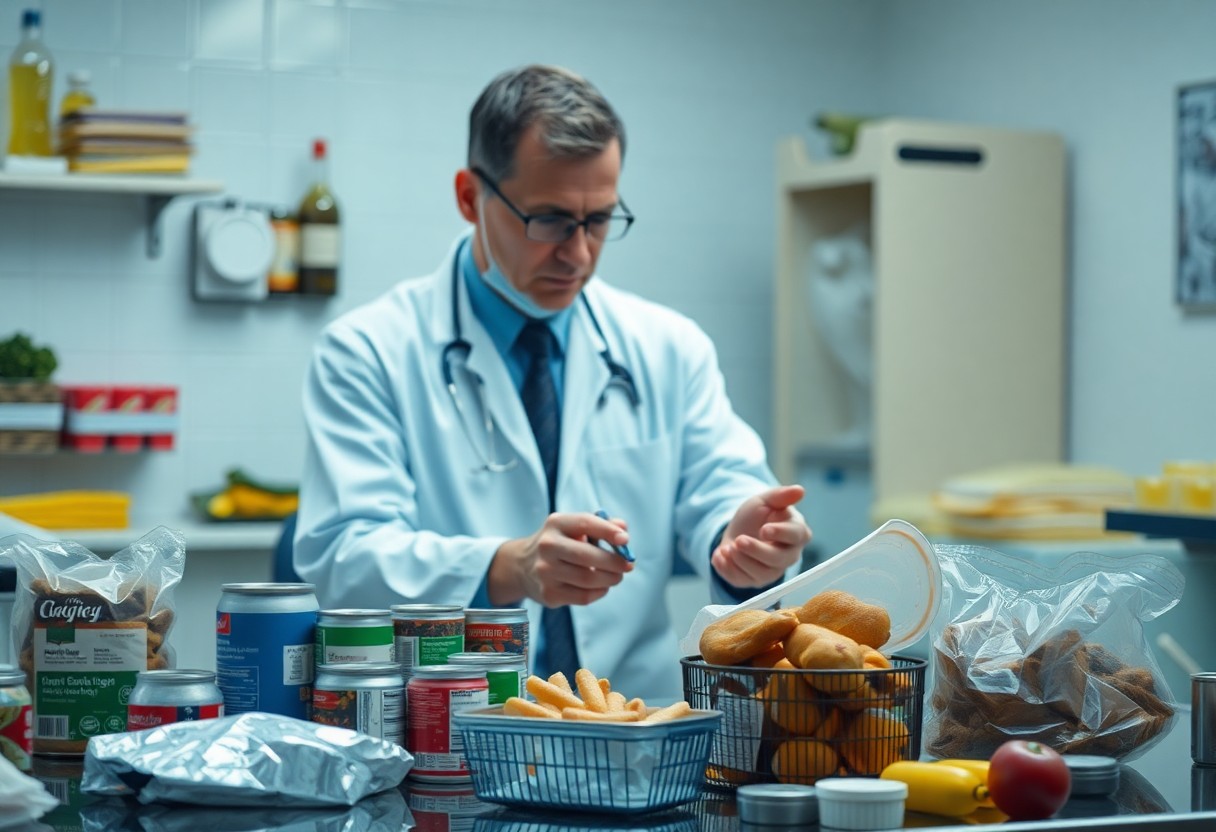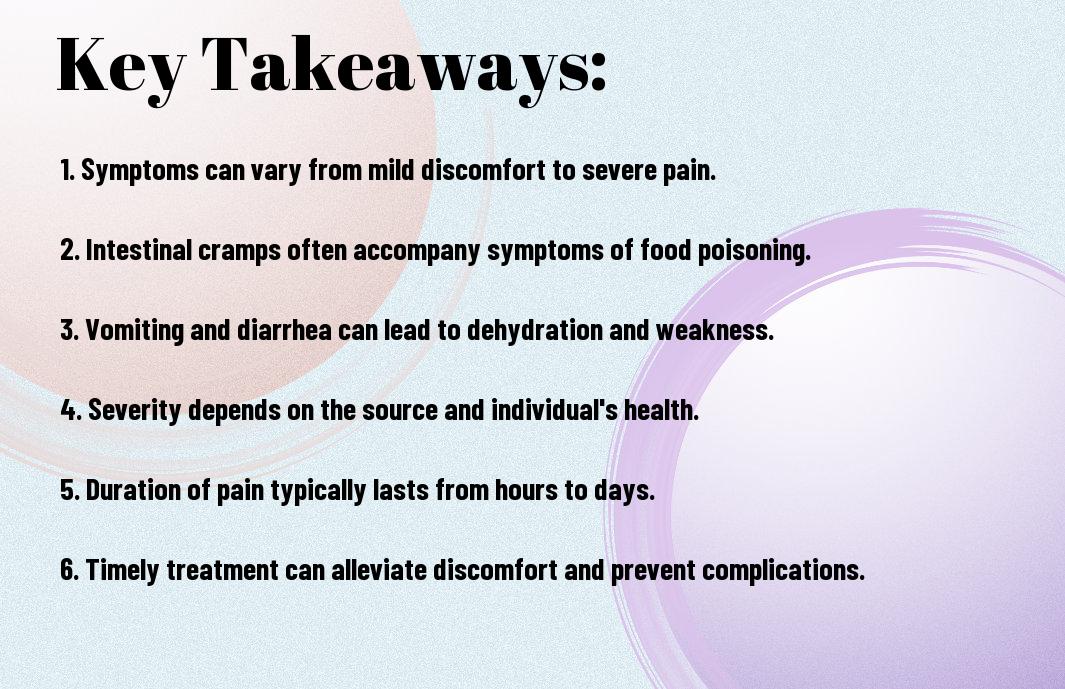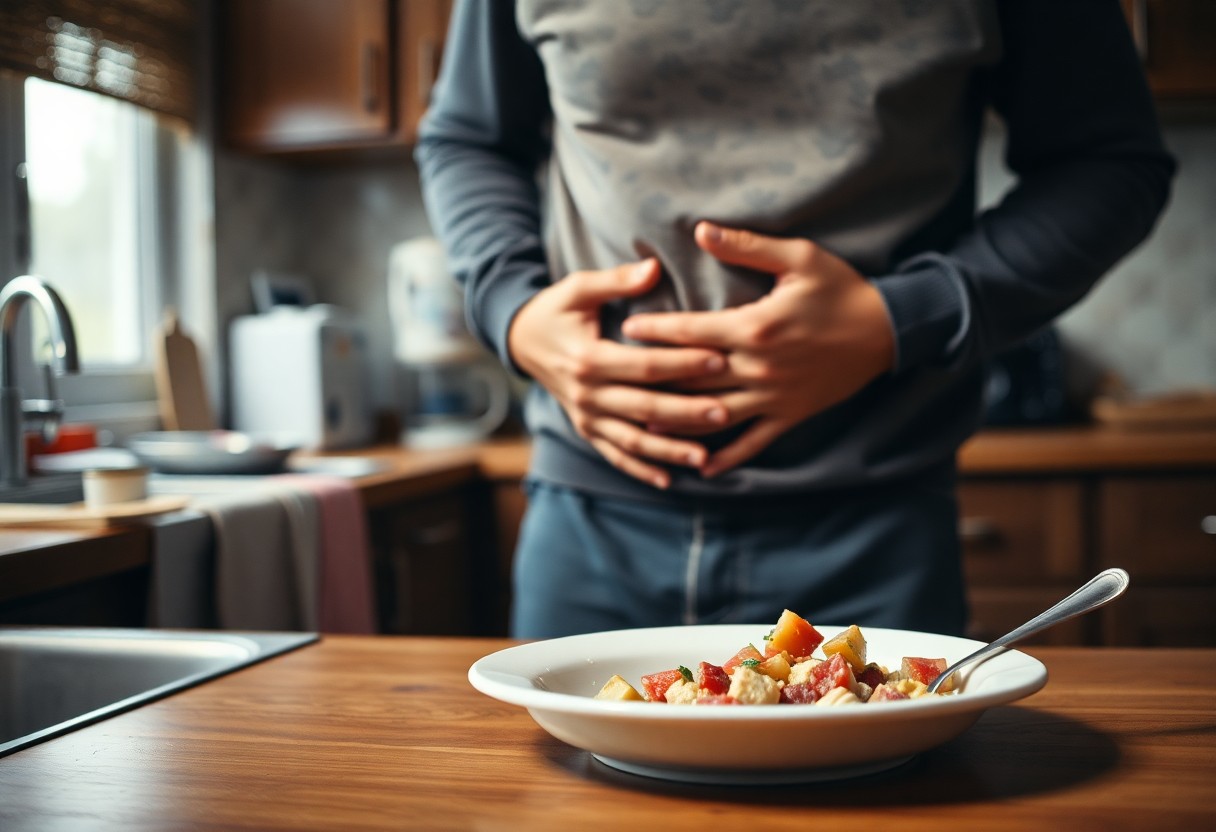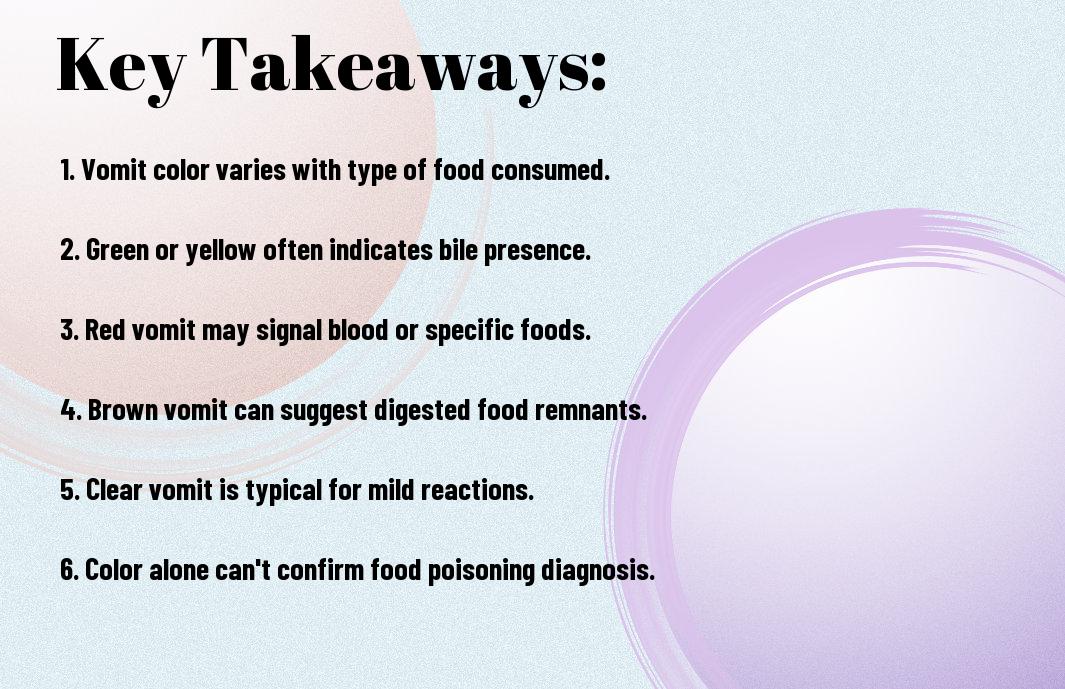Many individuals experience concerns about food safety, particularly when it comes to identifying the signs of food poisoning. Understanding how to check for food poisoning can empower you to make informed decisions regarding your health, especially if you’ve consumed potentially contaminated food. In this post, we will explore the common symptoms associated with food poisoning, the steps you can take to assess your condition, and when it’s crucial to seek medical attention. By being aware of these factors, you can better protect yourself and your loved ones from foodborne illnesses.
Key Takeaways:
- Know the Symptoms: Familiarize yourself with common food poisoning symptoms such as nausea, vomiting, diarrhea, and abdominal cramps.
- Check Food Sources: Ensure you are aware of the sources of your food, including expiration dates, proper storage, and whether any recalled items are present.
- Hygiene Practices: Practice good food hygiene by washing hands, cooking food to safe temperatures, and avoiding cross-contamination.
- Monitor Local Outbreaks: Stay informed about local foodborne illness outbreaks that may be reported in your area to make safer food choices.
- Consult a Professional: If symptoms are severe or persistent, seek help from a healthcare professional for proper diagnosis and treatment.
Understanding Food Poisoning
The understanding of food poisoning is vital for maintaining your health and safety when consuming food. This condition arises from ingesting contaminated food or beverages, leading to a variety of unpleasant symptoms. To learn more about the Symptoms of Food Poisoning | Food Safety, it is necessary to investigate deeper into the factors that contribute to foodborne illnesses.
What is Food Poisoning?
The food poisoning is a serious public health concern affecting millions each year. It typically occurs when one consumes food or water contaminated with harmful pathogens such as bacteria, viruses, or parasites. Understanding the source of contamination is crucial to prevent future occurrences.
Common Symptoms
Painful effects may emerge within hours or even days after consuming contaminated food. Common symptoms include nausea, vomiting, diarrhea, and abdominal cramps, resulting from the body’s attempt to expel the harmful pathogens. Early detection can greatly reduce the severity of these symptoms.
Food poisoning can manifest through various means, often requiring careful attention to your body’s signals. Be mindful of how your body is reacting after a meal; symptoms may range from mild discomfort to severe illness. You should seek medical attention if symptoms persist or worsen.
Types of Foodborne Illnesses
Foodborne illnesses are caused by several types of pathogens and toxins. Awareness of these can help you make informed dietary choices, limiting your risk of exposure. The following types are commonly associated with food-related cases:
- Bacterial infections (e.g., Salmonella, E. coli)
- Viral infections (e.g., Norovirus, Hepatitis A)
- Parasitic infections (e.g., Giardia, Toxoplasma)
- Chemical food poisoning (e.g., pesticides, heavy metals)
- Food allergies (e.g., nuts, shellfish)
Knowing the specific pathogens responsible for foodborne illnesses can significantly aid in your dietary decisions, helping you choose options less likely to cause sickness.
| Foodborne Illness | Description |
| Salmonella | A bacterial infection often found in meat and eggs. |
| E. coli | Can cause severe diarrhea; commonly linked to undercooked beef. |
| Norovirus | A leading cause of gastroenteritis, spreading via contaminated food. |
| Giardia | A parasite that can contaminate water or inadequately washed food. |
| Hepatitis A | A viral infection often contracted from contaminated food or water. |
Common symptoms associated with these illnesses vary, but awareness is vital for recognizing a potential foodborne disease outbreak. By understanding these variations, you can better protect yourself.
- Consult healthcare professionals if symptoms arise.
- Understand how to prevent foodborne illnesses through safe food handling and preparation.
- Stay informed about local food safety advisories.
- Monitor your symptoms closely for any changes.
- Educate others about food safety practices.
Knowing about the different foodborne illnesses and their symptoms will help empower you to make safer food choices.

Identifying High-risk Foods
Some foods are more prone to harboring harmful bacteria, viruses, and parasites that can lead to food poisoning. To minimize your risk, it’s necessary to identify these high-risk foods and handle them with care.
Raw and Undercooked Proteins
On many occasions, raw or undercooked meats, poultry, seafood, and eggs are linked to foodborne illnesses. When these proteins are not cooked to the appropriate temperatures, harmful pathogens such as Salmonella and E. coli can survive and lead to severe gastrointestinal issues.
Contaminated Fruits and Vegetables
For a large part, fresh produce can be just as risky as animal products, especially when contaminated with harmful bacteria or pesticides. You must wash fruits and vegetables thoroughly, as they can sometimes carry harmful pathogens from soil or water, even if they appear clean.
A damaged or bruised surface on fruits and vegetables can increase the likelihood of contamination, allowing bacteria to enter the inside of the food. Always opt for organic produce when possible, and remember to wash all items before consumption, as this can significantly reduce your risk of food poisoning.
Dairy Products and Eggs
With dairy products and eggs, you need to be cautious, as these items can harbor Listeria, Salmonella, and other harmful microorganisms when not handled or stored correctly. Always ensure these products are pasteurized and cooked thoroughly to kill any potential pathogens.
Foods such as soft cheeses, unpasteurized milk, and raw eggs require your special attention, as they are more likely to cause foodborne illnesses. When preparing dishes, make sure to use pasteurized dairy products and cook eggs until both the yolk and white are firm, protecting you from the risk of contamination.
Best Practices for Prevention
Despite the many advances in food safety, food poisoning remains a significant health risk for many individuals. To learn more about this topic, check out this comprehensive guide on Food Poisoning: Symptoms, Causes, and Treatment. By focusing on prevention, you can minimize your chances of experiencing foodborne illness.
Safe Food Handling Techniques
With proper food handling, you can greatly reduce the risk of food poisoning. Always wash your hands, utensils, and surfaces before preparing food. Keep raw meats separate from other foods to avoid cross-contamination, and ensure that you use clean cutting boards and plates.
Importance of Cooking Temperatures
On cooking your food to the appropriate temperatures, you effectively eliminate harmful bacteria that cause foodborne illnesses. It’s important to use a food thermometer to ensure that your meals have reached the necessary internal temperatures.
Cooking Temperature Guidelines
| Food Item | Minimum Internal Temperature |
|---|---|
| Poultry (chicken, turkey) | 165°F (74°C) |
| Ground meats | 160°F (71°C) |
| Beef, pork, lamb (steaks, chops) | 145°F (63°C) |
| Fish | 145°F (63°C) |
The correct cooking temperatures not only kill harmful bacteria but also ensure that your food is safe and palatable. Utilizing a reliable food thermometer can give you peace of mind that you’ve cooked your food to the recommended temperatures.
Proper Food Storage Guidelines
With the right food storage practices, you can extend the shelf life of your groceries while keeping your meals safe. Make sure to refrigerate perishable items promptly and avoid leaving food out at room temperature for extended periods.
A good rule of thumb is to practice FIFO (First In, First Out) in your fridge and pantry. This ensures that older items are used first, reducing waste and minimizing the risk of consuming spoiled food. Regularly check your refrigerator and pantry for expired items, and discard anything that looks questionable.
Monitoring and Testing for Food Poisoning
Not all cases of food poisoning are severe, but knowing how to monitor and test for it is crucial. By being proactive, you can identify potential issues and seek help if necessary. Understanding the methods available for testing and recognizing symptoms can help keep you and your loved ones safe.
Home Testing Kits
On the market today, there are various home testing kits designed to help you identify foodborne pathogens in your kitchen. These kits typically allow you to collect a sample of suspected food and send it to a lab for analysis. While home testing can provide quick results, always rely on laboratory confirmations for precise diagnostics.
Laboratory Testing and Reporting
One of the most reliable methods for determining food poisoning involves laboratory testing. If you suspect that food has caused illness, you should collect samples of the food, water, or your own stool for laboratory analysis. Lab technicians use sophisticated methods to identify specific pathogens, ensuring accurate results that can inform appropriate responses.
A comprehensive analysis by a laboratory can not only identify the presence of bacteria, viruses, or toxins but also help track the source of the contamination. This information is vital for public health reporting and may prevent further outbreaks. In some cases, local health departments may seek your data for monitoring trends or recall notices.
Recognizing When to Seek Medical Help
The symptoms of food poisoning can vary, but knowing when to seek help is critical for your health. You should contact a healthcare professional if you experience severe symptoms such as prolonged vomiting, dehydration, or blood in your stool.
Laboratory testing plays a significant role in diagnosing the severity of your condition. Medical professionals may recommend specific tests based on your symptoms to tailor the best treatment plan. Do not forget, timely intervention is crucial in managing food poisoning effectively and preventing complications.
Summing up
Hence, to check for food poisoning, you should be vigilant about the freshness and safety of your food, keep an eye on expiration dates, and observe proper food handling and cooking practices. If you experience symptoms like nausea, vomiting, or diarrhea, it’s crucial to stay hydrated and seek medical attention if symptoms persist. Additionally, you can consult local health departments for outbreaks. Always prioritize food safety to protect your health and well-being.
FAQ
Q: What are the common symptoms of food poisoning?
A: Common symptoms of food poisoning can include nausea, vomiting, diarrhea, stomach cramps, fever, and chills. These symptoms typically appear within hours or days after consuming contaminated food or beverages. It’s important to note that symptoms can vary depending on the cause of the food poisoning and can range in severity.
Q: How can I determine if I have food poisoning or just a stomach bug?
A: Distinguishing between food poisoning and a stomach bug can be challenging, as both conditions share similar symptoms. However, if you’ve recently consumed food or drink that you suspect may be contaminated, or if multiple people who ate the same food are experiencing symptoms, it is more likely to be food poisoning. Additionally, if symptoms persist for more than a few days or worsen, it is advisable to seek medical attention for a proper diagnosis and treatment.
Q: What should I do if I suspect I have food poisoning?
A: If you suspect you have food poisoning, it is important to stay hydrated by drinking plenty of fluids, such as water or electrolyte solutions, to prevent dehydration. Resting is also crucial for recovery. If symptoms are severe, such as high fever, persistent vomiting, or signs of dehydration (such as dizziness, dry mouth, or decreased urination), seek medical advice immediately. Additionally, keeping track of what you ate and when you experienced symptoms may help healthcare providers identify the source of the food poisoning.


























